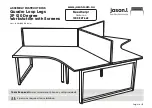
ANSWER:
A Certificate of Conformity is based on only one test, usually. As a
polymer may vary throughout the process, you cannot be sure that the polymer
is the same throughout your delivery. It has been known for processors to have
problems during production and for them to think that they are machine
problems, when in fact it is their material that is out of specification.
QUESTION:
How long should a test take from start to finish?
ANSWER:
This depends, to a large extent, on the MFI of the material, but
roughly the times are as follows:
- Loading/Weighing sample (2 minutes)
- Melting time (6 minutes)
- Testing time MFI > 8 (1-2 minutes)
- Testing time MFI 3 - 8 (3-6 minutes)
- Testing time MFI < 3 (6-10 minutes)
- Cleanup (2 minutes)
- Heat Stabilization (2 minutes)
QUESTION:
What form should my sample be in?
ANSWER:
For ease of loading, granules are best. Regrinds, plastic films,
powders and liquids have all been successfully tested. Watch for air entrapment
with some forms.
QUESTION:
What type of sample preparation should I perform?
ANSWER:
Some type of drying conditions may need to be carried out before
testing. Preferably, this should be done at the same conditions your production
material goes through. LDPE, HDPE and PP therefore will not need any
significant drying.
QUESTION:
Should I check the MFI on my finished product?
ANSWER:
Sure! You want to know if what you made yesterday is the same as
what you made today. If it’s the proper quality and did it change? You also want
to make sure that the performance of your process and end product are
consistent day to day.
QUESTION:
What are the lowest MFI and highest MFI we can test?
ANSWER:
Typically down to 0.1 gm/ 10 mins. Any values lower increase your
weight or temperature.
Typically the highest would be 500 gm/ 10 mins. however it is possible to go
up to 1500 gm/ 10 mins. Tests above 50 gm/ 10 mins. are uncommon and do
require skilled operators.
QUESTION:
How long does the die last?
ANSWER:
The die is made of tungsten carbide which is extremely wear
resistant. The die should last for several years if cleaned and maintained
properly. Some manufacturers use stainless steel dies which last 2 years.
QUESTION:
What should the barrel be cleaned with?
ANSWER:
With the tools and cotton patches provided. There should be no oils
on the patches. You can heat the machine to its highest temperature to burn off
any residue. You really shouldn’t use any solvents to clean the barrel due to fire
and health hazards. Check with your company safety manager what the policy
is.
QUESTION:
Can we leave the machine on 24 hours a day?
Series 4000 Melt Indexer Operation Manual
Questions and Answers
71












































